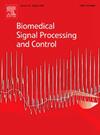EFEMNet: An efficient feature extraction multi-attention convolutional neural network for skin lesion segmentation
IF 4.9
2区 医学
Q1 ENGINEERING, BIOMEDICAL
引用次数: 0
Abstract
Melanoma is the skin tumor with the highest mortality rate, and timely diagnosis based on dermoscopic images is an essential task in melanoma prevention and treatment. However, complex dermoscopic image morphology and unclear image edges affect the accurate diagnosis of melanoma. This study presents an encoder–decoder architecture (EFEMNet) to segment dermatologic lesions. First, residual concatenation is introduced in the encoder part to enhance the feature retention capabilities. Second, Coordinate Attention is utilized to identify and localize the target region more accurately for dermoscopic images with different morphologies. Third, an efficient feature extraction module (EFEM) is designed to improve up-sampling operations and to extract and fuse features efficiently. Finally, Global Attention Module (GAM) Attention is added to the output layer to integrate the dimensions in space and channels to solve the problem of unclear edges in dermoscopy images. The suggested method is evaluated on various datasets, such as ISIC 2018 and EFEMNet, and segmented skin lesions more accurately than some state-of-the-art network models, achieving 92.52% Dice, 86.81% IoU, 96.01% Accuracy, 93.86% Recall, and 92.92% Precision. The proposed method is shown to outperform other methods across all evaluation indices, and the effectiveness of the functional module is validated through a series of ablation experiments.
EFEMNet:一种用于皮肤病灶分割的高效特征提取多注意卷积神经网络
黑色素瘤是死亡率最高的皮肤肿瘤,基于皮肤镜图像的及时诊断是预防和治疗黑色素瘤的重要任务。然而,复杂的皮肤镜图像形态和模糊的图像边缘影响了黑色素瘤的准确诊断。本研究提出了一种编码器-解码器架构(EFEMNet)来分割皮肤病变。首先,在编码器部分引入残差拼接,增强特征保留能力。其次,利用坐标注意对不同形态的皮肤镜图像进行更准确的目标区域识别和定位。第三,设计了高效的特征提取模块(EFEM),改进了上采样操作,有效地提取和融合特征。最后,在输出层中加入Global Attention Module (GAM) Attention,对空间维度和通道维度进行整合,解决皮肤镜图像边缘不清晰的问题。该方法在ISIC 2018和EFEMNet等多种数据集上进行了评估,比一些最先进的网络模型更准确地分割皮肤病变,达到92.52% Dice, 86.81% IoU, 96.01% Accuracy, 93.86% Recall和92.92% Precision。结果表明,该方法在所有评价指标上都优于其他方法,并通过一系列烧蚀实验验证了该功能模块的有效性。
本文章由计算机程序翻译,如有差异,请以英文原文为准。
求助全文
约1分钟内获得全文
求助全文
来源期刊

Biomedical Signal Processing and Control
工程技术-工程:生物医学
CiteScore
9.80
自引率
13.70%
发文量
822
审稿时长
4 months
期刊介绍:
Biomedical Signal Processing and Control aims to provide a cross-disciplinary international forum for the interchange of information on research in the measurement and analysis of signals and images in clinical medicine and the biological sciences. Emphasis is placed on contributions dealing with the practical, applications-led research on the use of methods and devices in clinical diagnosis, patient monitoring and management.
Biomedical Signal Processing and Control reflects the main areas in which these methods are being used and developed at the interface of both engineering and clinical science. The scope of the journal is defined to include relevant review papers, technical notes, short communications and letters. Tutorial papers and special issues will also be published.
 求助内容:
求助内容: 应助结果提醒方式:
应助结果提醒方式:


